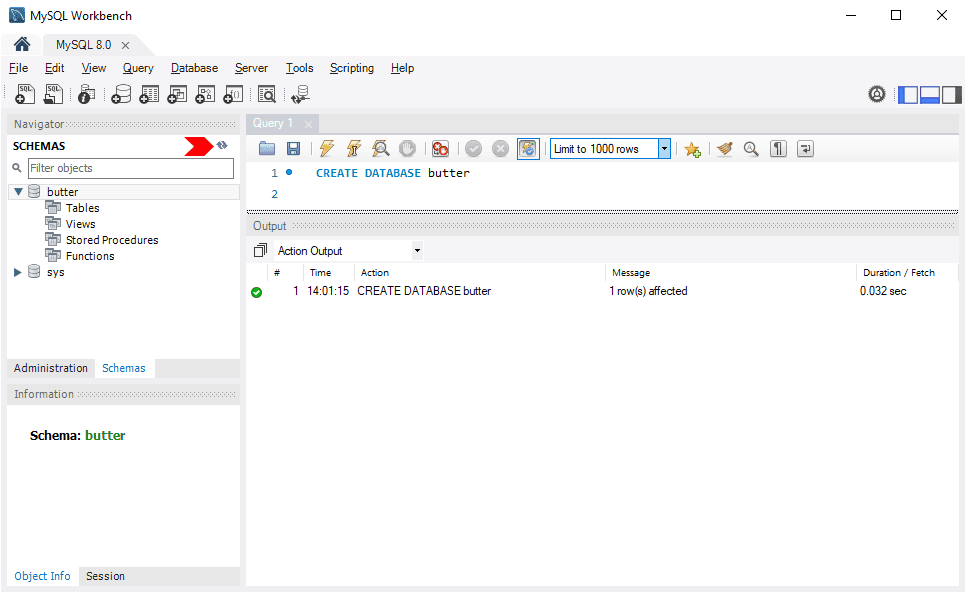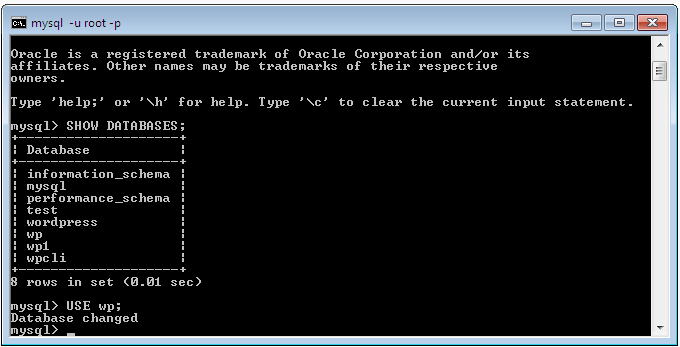

- USE DATABASE MYSQL HOW TO
- USE DATABASE MYSQL UPGRADE
- USE DATABASE MYSQL FULL
- USE DATABASE MYSQL SOFTWARE
- USE DATABASE MYSQL PASSWORD
When “ready for connections” appears, your MySQL database is accessible. You can view the container’s startup logs with docker logs mysql -follow. The -d flag means the container will run in the background until it’s stopped, independently of your terminal session.
USE DATABASE MYSQL PASSWORD
The password for the root user is set manually. This command starts a container with MySQL 8. Here’s an example of running a basic MySQL container with a specified root password:ĭocker run -name mysql -d \ -p 3306:3306 \ -e MYSQL_ROOT_PASSWORD=change-me \ -restart unless-stopped \ mysql:8 Starting a MySQL container and pulling the Docker image You need to either supply a password for this user or ask MySQL to generate one. Starting a MySQL container for the first time will automatically create an initial root user. Specifically referencing the version you want allows for a more controlled approach to updates.
USE DATABASE MYSQL UPGRADE
Avoid using this tag, as it means you could unintentionally receive a major MySQL version upgrade in the future. The latest tag points to the latest release, currently 8.0. MySQL versions 5.6, 5.7, and 8.0 are available. First identify the image tag you should use. MySQL has an official Docker image available on Docker Hub.
USE DATABASE MYSQL HOW TO
Here’s how to get a MySQL server running in a Docker container. If your production instance uses the same Docker image as development, you can be sure your live systems will behave predictably. Using it for your whole cycle guarantees consistency. Nonetheless, Docker is perfectly capable of supporting MySQL database deployments, from local development environments through to production. A bare-metal production server also keeps your instance accessible to people in database maintenance roles who are unfamiliar with Docker. Docker’s performance overheads are modest but can stack up in I/O-intensive workloads like those of a write-heavy database. Demanding production environments might be better off with a dedicated MySQL server. There are some scenarios where choosing to Dockerize your database might be less impactful. Using containers offers complete separation of each system’s data and the ability to provide a unique MySQL server configuration for each one.
USE DATABASE MYSQL FULL
It’s much quicker and easier to start a database in Docker than to configure a conventional MySQL installation in a full virtual machine.Īlthough you could run MySQL locally on your host, this becomes limiting when you’re working on several applications simultaneously.

Use Cases for MySQL in Dockerĭockerized MySQL works well in development and staging environments where you want to quickly bring up isolated database instances. You can mount the volumes back into new containers, avoiding data loss after you replace your MySQL instance with a new image version. After your MySQL container stops, the files stored in its mounted volumes will remain accessible on your host. Volumes store data outside of any single container. You’ll lose your database if you restart a MySQL container that’s not using volumes.

Volumes provide a mechanism to persist files after the container stops. You need to use Docker volumes when deploying a MySQL container. The most significant is data storage: Docker is primarily designed around stateless containers, while a MySQL database is inherently stateful. While using Docker with MySQL simplifies many aspects of your deployment, such as installing the server and creating a database, it does come with some technical issues. In this article, you’ll learn how you can Dockerize your database, what you need to know first, and why you should try it. Once you’re done building your system, you can deploy your containers to the cloud without manually installing and configuring MySQL on bare-metal hardware. Using containers gives you the benefit of consistency. You can also use a container orchestrator like Kubernetes to scale MySQL independently of your API server instance. Running MySQL inside a Docker container lets you separate your database from your code.

MySQL is one of the most popular SQL-compatible relational databases. With Docker, you can run or scale your application in any environment.
USE DATABASE MYSQL SOFTWARE
Containers are isolated environments that hold an application along with all the software packages it needs. If you’re interested in a simple and containerized approach to building software then check us out.ĭocker is among the more popular platforms for developing and deploying containerized applications. This article is about data management for MySQL containers. We make building software simpler and therefore faster.


 0 kommentar(er)
0 kommentar(er)
